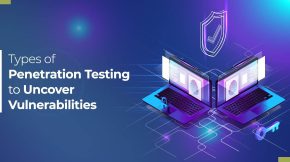Create a Powerful Moodle VLE with These 5 Top Tips
Looking for a better way to train your team? A Moodle Virtual Learning Environment (VLE) could be what you need.
Let’s see how you can make a Moodle VLE that transforms how your team learns.
What is a Moodle VLE?
Think of a Moodle VLE as your online learning hub. It’s where you can provide courses, share resources, monitor progress, and enable collaboration.
It’s more than just putting materials online; it makes learning engaging and interactive.
A well-designed Moodle VLE can significantly enhance both online and offline learning. It makes learning more interesting and fits individual needs.
This includes online activities, communication tools, assessments, and reporting features. All this works together to create a comprehensive learning system.
Tip 1: Make Your Moodle VLE Easy to Use
The best Moodle VLE is one that everyone can use without difficulty. This is really important in schools or companies, where you have all kinds of people with different tech skills.
You might have teachers or experts or students of all ages and abilities.
Remember, a VLE needs people to actively participate. Users should be able to do more than just read or watch.
They need to join in, share, and assist each other.
The best part about Moodle is that it is known for being easy to use, with a simple design. Its drag-and-drop course builders make it super easy for instructors to create new content.
How to do it?
- Keep things simple: When you are designing your Moodle VLE, avoid unnecessary complexity.
- Focus on UX design: Pay attention to how people will use it. Make it simple to find information and navigate.
Beyond Key can help you create a Moodle VLE that’s easy to use. We can develop a user-friendly homepage and an easy-to-navigate course page.
This way, your users can quickly find what they require and learn more.
Tip 2: Keep Your Content New and Interesting
Don’t let your Moodle VLE become a static repository with outdated materials. To make it a real learning environment, keep things fresh.
This means adding new resources often and using different types of content to accommodate various learning preferences.
We know how Moodle’s content tools makes it easy to create new courses and update them when needed.
You can also use plugins to make interactive content, like games and scenarios.
Collaboration is also key. Try creating a community feeling with Moodle features like wikis and discussion boards.
These tools let learners share insights and take part in their learning.
How to do it?
- Update content often: Add new resources regularly to keep people engaged.
- Use different content types: Include videos, quizzes, articles, and interactive exercises.
- Encourage teamwork: Use Moodle’s features to help people work together.
Want to see how a Moodle VLE can transform your training programs? We invite you to request a demo of Beyond Key’s Moodle services.
Tip 3: Give Learners Their Own Space
To get your learners really involved, give them a sense of ownership. Let them customize the environment to fit their needs.
The best approach is to give them their own space in the Moodle VLE.
Moodle Dashboards let users customize their page by adding or removing elements like a calendar or upcoming events.
This gives them quick access to what they need. Users also get their own file area to store notes or drafts.
How to do it?
- Enable Moodle Dashboards: Let users customize their dashboards they need to succeed.
- Provide file storage: Give your learners a place to keep their personal learning materials.
- Encourage personalization: Let your users tailor the platform to their preferences.
Tip 4: Watch Progress with Reports
The best VLEs give constant feedback on how learners are progressing. And Moodle’s reports does let you see the metrics like course completion rates.
To keep people motivated, you can also give them badges for doing well. These badges show on their profile and can be for finishing a course or activity.
How to do it?
- Use Moodle’s reports: Track how people are progressing in courses.
- Give badges for achievements: Recognize and reward learner progress for motivation.
- Provide feedback: Give learners regular updates on their performance.
Tip 5: Make the VLE Available Anywhere
One of the best things about a VLE is that it lets learners learn at their own pace with 0 rush. And with instant access, students can learn at their own pace and use all the learning resources.
A VLE makes it easy to catch up or study for exams.
To get the most from a VLE, learners should be able to use it anywhere. And guess what? This is possible with the Moodle LMS and the Moodle app.
With features like notifications and offline learning, learners can use the Moodle VLE no matter where they are.
How to do it?
- Use the Moodle app: Let learners use the VLE on their phones when they want, where they want.
- Allow offline access: Let learners download content to view offline. no worries about bad network area.
- Provide notifications: Keep learners updated on changes and deadlines with simple, clean alerts.
So, Here’s The Thing About Moodle VLE
Building a good Moodle VLE might seem challenging, but trust us and our Moodle experts, it’s worth it.
By making it easy to use, keeping content fresh, letting people personalize it, tracking progress, and making it available anywhere, you can create a learning environment that really supports your learners and ensures they not just stay hooked, but actually complete their learning.
Feel like You Want to Transform Your Training?
At Beyond Key, we can help you design, set up, and manage a Moodle VLE that fits your needs.
We offer custom Moodle modifications, plugin creation, and seamless integrations.
Let us show you how we can help you get the most from your e-learning.
This demo won’t be a sneak peek—it will be your ticket to a Moodle world designed just for you.












